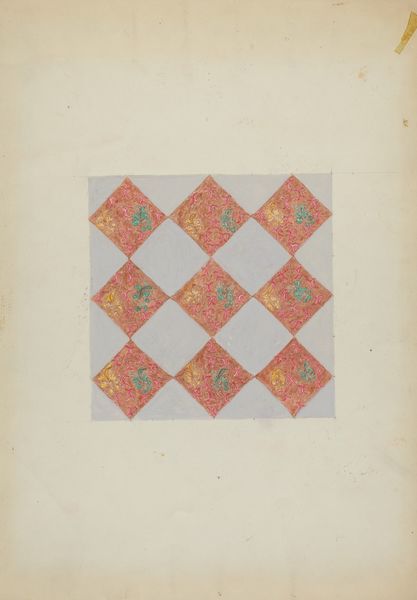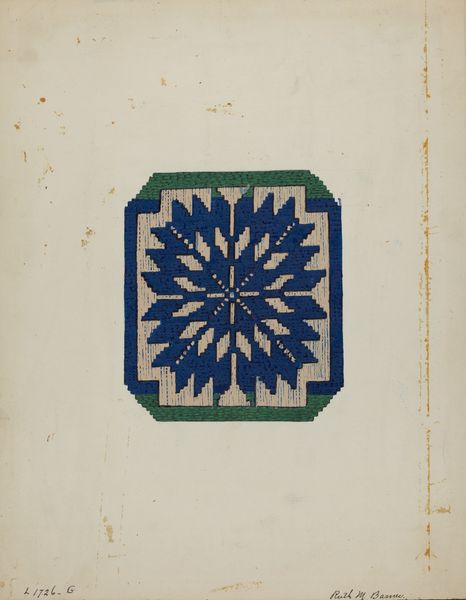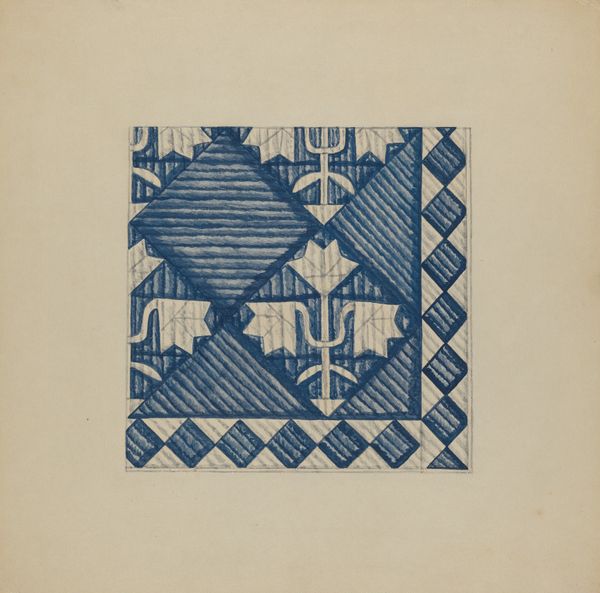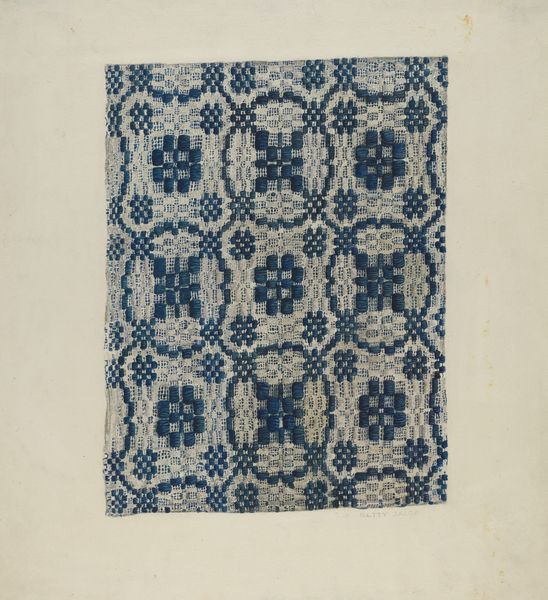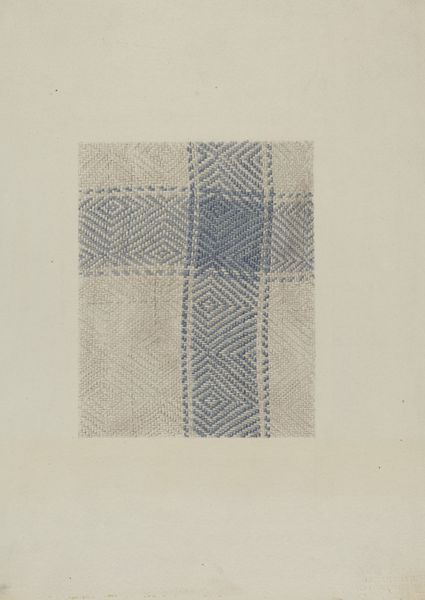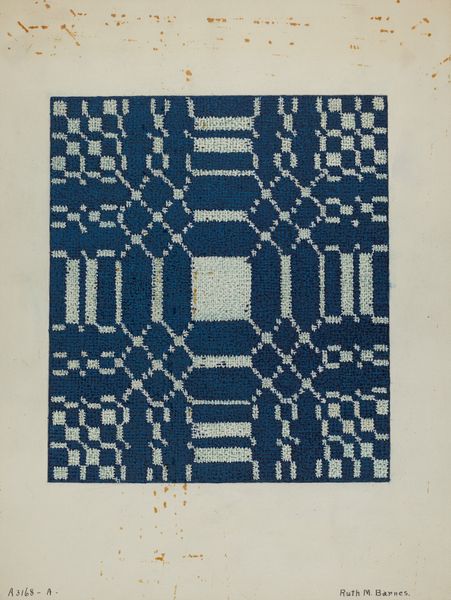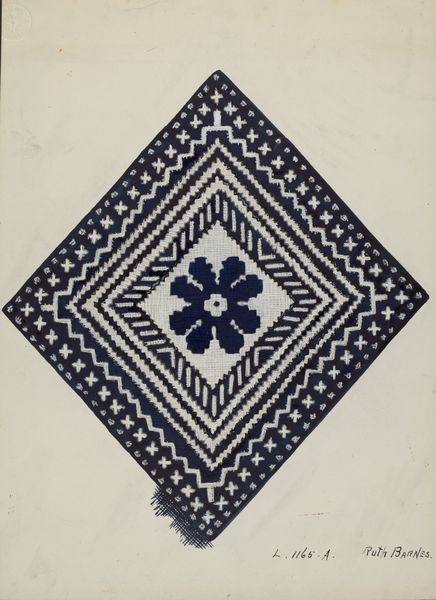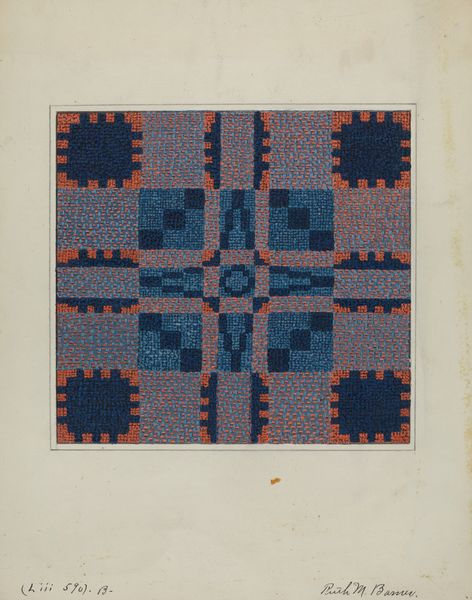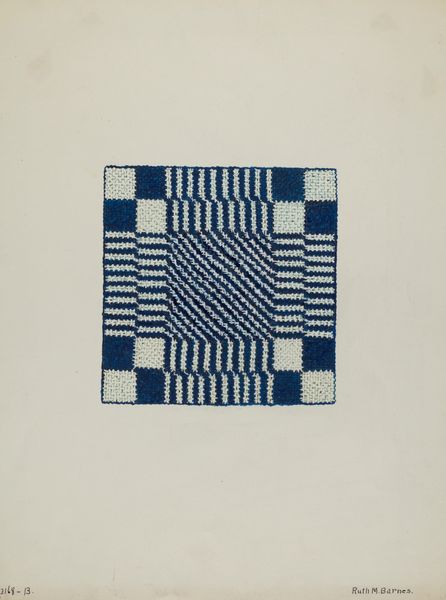
drawing, paper
#
drawing
#
paper
#
geometric
#
abstraction
Dimensions: overall: 35.6 x 26.3 cm (14 x 10 3/8 in.) Original IAD Object: 104" square
Copyright: National Gallery of Art: CC0 1.0
Editor: This is "Patchwork Quilt," a drawing on paper by Genevieve Sherlock, created sometime between 1935 and 1942. The geometric pattern immediately grabs you; it's both simple and complex at the same time. It feels very grounded. How do you read it? Curator: I see a world steeped in symbolic resonance. Quilts, even on paper, hold layers of meaning, particularly for women in the domestic sphere. The geometric precision speaks to order and control, yet the handmade quality hints at imperfection and the passage of time. Do you see a cross-form or arrow-form repeated throughout the pattern? Editor: I do see those shapes, like little stylized birds almost! So you're saying the design choices, beyond just aesthetics, carry cultural weight? Curator: Precisely. The blue dye evokes a feeling of constancy, of traditional 'blueprint', or indigo work. Geometric shapes can suggest rationality, but here they're softened, humanized by their slight asymmetry. These "birds," whether by accident or design, form a flock... a community... even movement. What are your thoughts? Editor: I hadn't considered that. So the artist might be exploring themes of home and heritage, but also hinting at change and movement beyond the domestic space? That's pretty deep for a quilt pattern! Curator: Visual symbols often carry multi-layered messages, and the emotional impact is considerable. Thinking about 'Hidden in Plain Sight' quilts created along the Underground Railroad or for communication during the AIDS crisis is an indication that art doesn't have to be in gilded frames to pack meaning. Are we now seeing it anew? Editor: Absolutely. I never would have considered this work anything more than a pretty picture without this perspective. Curator: And hopefully the work, because of our exchange, now has different textures.
Comments
No comments
Be the first to comment and join the conversation on the ultimate creative platform.

